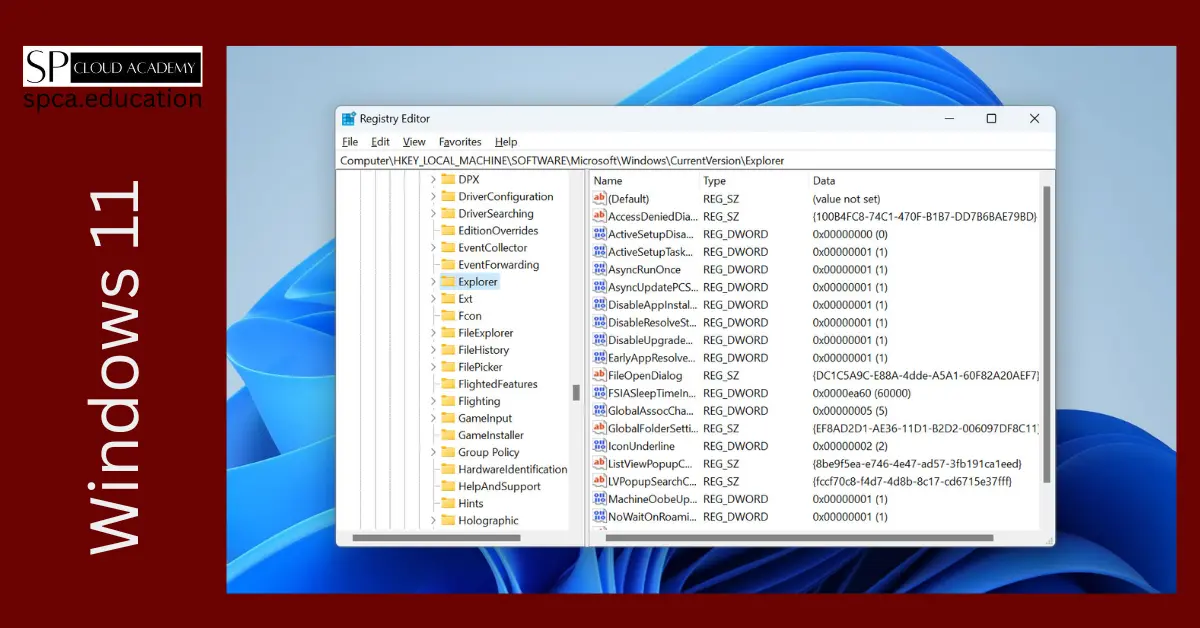Windows 11 Registry Optimization is an important aspect of maintaining a healthy and efficient computer. The Windows Registry is a database that stores important configuration settings and options for the operating system and installed applications. Over time, the registry can become cluttered with outdated or unnecessary entries, which can slow down the system and cause errors.
Optimizing the Windows 11 Registry involves removing unnecessary entries, repairing damaged or corrupted entries, and tweaking settings to improve performance. While it is possible to manually edit the registry using the Registry Editor, this can be risky and should only be attempted by experienced users. Fortunately, there are many third-party tools available that can automate the process and make it safer and easier for users of all levels. These tools can scan the registry for errors and provide recommendations for optimization, as well as backup and restore the registry in case of any issues.
Understanding the Windows 11 Registry
The Windows 11 Registry is a hierarchical database that stores configuration settings and options for the operating system and installed applications. It is a vital component of the Windows operating system and contains information about hardware, software, user preferences, and system settings.
Registry Structure
The Windows 11 Registry is organized into five main sections, called hives, which are as follows:
| Hive Name | Description |
|---|---|
| HKEY_CLASSES_ROOT | Contains file association information for the system and user |
| HKEY_CURRENT_USER | Contains configuration information for the current user |
| HKEY_LOCAL_MACHINE | Contains configuration information for the local machine |
| HKEY_USERS | Contains configuration information for all users |
| HKEY_CURRENT_CONFIG | Contains configuration information for the current hardware profile |
Each hive is further divided into keys, subkeys, and values that contain configuration information and settings.
Key Components
The Windows 11 Registry consists of three main components, as follows:
- Keys: Keys are containers that store configuration information and settings. They are similar to folders in a file system and can contain subkeys, values, and data.
- Subkeys: Subkeys are containers that store configuration information and settings. They are similar to subfolders in a file system and can contain values and data.
- Values: Values are data items that store configuration information and settings. They are similar to files in a file system and can contain data such as strings, binary data, and integers.
Importance of Optimization
Optimizing the Windows 11 Registry can improve system performance, stability, and reliability. Over time, the registry can become cluttered with invalid, outdated, and redundant entries that can slow down the system and cause errors and crashes.
Optimization involves removing unnecessary entries, repairing invalid entries, and defragmenting the registry to improve access times. This can be done manually or with the help of third-party tools that automate the process.
In conclusion, understanding the structure and components of the Windows 11 Registry is essential for optimizing the system and improving performance. By keeping the registry clean and optimized, users can ensure that their system runs smoothly and efficiently.
Preparation for Optimization
Before optimizing the Windows 11 registry, it is essential to prepare the system to avoid any potential issues. This section outlines the necessary steps to take before proceeding with the optimization process.
Backup the Registry
Before making any changes to the registry, it is recommended to create a backup to avoid any potential issues. The registry is a critical component of the Windows operating system, and any incorrect changes can cause severe issues, including system instability and failure to boot.
To create a backup of the registry, follow these steps:
- Press the Windows key + R to open the Run dialog box.
- Type “regedit” and press Enter to open the Registry Editor.
- Click on “File” in the top menu and select “Export.”
- Select a location to save the backup and give it a descriptive name.
- Ensure that the “Selected branch” option is selected and click “Save.”
It is recommended to create a backup before making any significant changes to the registry.
System Restore Points
Creating a system restore point is another essential step before optimizing the registry. A system restore point allows the user to restore the system to a previous state if any issues occur during the optimization process.
To create a system restore point, follow these steps:
- Press the Windows key + R to open the Run dialog box.
- Type “sysdm.cpl” and press Enter to open the System Properties window.
- Click on the “System Protection” tab.
- Click on the “Create” button and give the restore point a descriptive name.
- Click “Create” to create the restore point.
It is recommended to create a system restore point before making any significant changes to the system, including registry optimization.
Registry Cleaning
Keeping the Windows 11 registry clean is crucial for maintaining system performance. Over time, the registry accumulates a lot of outdated and redundant entries that can slow down the computer. In this section, we’ll discuss the different methods for cleaning the registry.
Manual Cleaning
The Windows registry can be cleaned manually using the built-in Registry Editor. However, this method requires a lot of technical expertise and can be risky for novice users. To clean the registry manually, users need to identify and remove invalid entries, which can be time-consuming and error-prone.
To clean the registry manually, users can open the Registry Editor by pressing the Windows key + R and typing regedit. Then, they can navigate to the registry keys that need to be cleaned and delete the invalid entries. However, it’s important to note that deleting the wrong registry key can cause system instability and even lead to a complete system failure.
Automated Tools
Automated registry cleaning tools are a safer and more efficient way to clean the registry. These tools scan the registry for invalid entries and remove them automatically. They also provide backup and restore options, which can be helpful in case something goes wrong during the cleaning process.
There are many registry cleaning tools available for Windows 11, both free and paid. Some of the popular ones include CCleaner, Wise Registry Cleaner, and Auslogics Registry Cleaner. However, it’s important to choose a reputable tool from a trusted source to avoid downloading malware or potentially harmful software.
Safety Precautions
Before cleaning the registry, users should always create a backup of the registry. This can be done by exporting the registry to a file, which can be restored later if needed. It’s also recommended to create a system restore point before cleaning the registry, which can be used to revert the system to its previous state in case of any issues.
In addition, users should be cautious when using automated registry cleaning tools. They should always read the instructions carefully and avoid making any changes to the registry that they don’t understand. It’s also a good idea to research the tool and read reviews from other users before downloading and installing it.
Overall, cleaning the registry is an important part of maintaining the performance and stability of a Windows 11 system. Users can choose between manual cleaning or using automated tools, but should always take appropriate safety precautions to avoid any issues.
Performance Tweaks
Windows 11 Registry Optimization can significantly improve the performance of your system. In this section, we will discuss some of the best performance tweaks that you can apply to your Windows 11 Registry using the Registry Editor.
Startup Optimization
When your system starts up, it loads a range of programs and services that can slow down the startup process. You can optimize the startup process by disabling unnecessary programs and services. To do this, open the Registry Editor and navigate to the following location:
HKEY_LOCAL_MACHINE\SOFTWARE\Microsoft\Windows\CurrentVersion\Run
Here, you will find a list of programs that start automatically when your system boots up. You can disable any program that you don’t need by right-clicking on it and selecting “Delete” or by simply disabling it.
System Responsiveness
Windows 11 Registry Optimization can also improve system responsiveness. To do this, you can adjust the priority of foreground applications. By default, Windows gives the same priority to all running applications, which can cause slowdowns in the foreground application. To change this, navigate to the following location in the Registry Editor:
HKEY_LOCAL_MACHINE\SOFTWARE\Microsoft\Windows NT\CurrentVersion\Multimedia\SystemProfile
Here, you will find a key called “SystemResponsiveness”. Double-click on it and change the value from 20 to 0. This will give priority to foreground applications.
Hardware Acceleration Settings
Another way to improve performance is by adjusting the hardware acceleration settings. Hardware acceleration uses the power of your graphics card to speed up certain tasks. To change the hardware acceleration settings, open the Registry Editor and navigate to the following location:
HKEY_CURRENT_USER\SOFTWARE\Microsoft\Avalon.Graphics
Here, you will find a key called “DisableHWAcceleration”. Double-click on it and change the value from 0 to 1 to disable hardware acceleration.
By applying these performance tweaks, you can significantly improve the performance of your Windows 11 system.
Advanced Optimization Techniques
Windows 11 Registry Optimization can go beyond the basic tweaks and hacks. Advanced optimization techniques can help improve system performance and enhance the user experience. Here are some advanced techniques:
Registry Defragmentation
The Windows registry can become fragmented over time, leading to slower system performance. Defragmenting the registry can help optimize the system and improve performance. There are several third-party tools available that can defragment the registry.
Network Optimization
Windows 11 comes with several features that can help optimize network performance. For example, enabling Large Send Offload (LSO) can help improve network throughput. Disabling Network Throttling can also help improve network performance.
Custom UI Enhancements
Customizing the Windows 11 user interface can help improve productivity and enhance the user experience. For example, changing the size of the taskbar can help improve visibility and make it easier to access frequently used applications. Customizing the Start menu can also help improve productivity.
Overall, advanced optimization techniques can help improve system performance and enhance the user experience. However, it is important to be cautious when making changes to the registry or system settings. Making incorrect changes can lead to system instability or other issues. It is recommended to create a backup of the registry before making any changes.
Maintenance and Monitoring
Windows 11 Registry Optimization requires regular maintenance and monitoring to ensure the system runs smoothly. This section will explore some of the best practices for maintaining and monitoring the Windows 11 Registry.
Scheduled Cleaning
Scheduled cleaning is essential to keep the Windows 11 Registry optimized. The Windows Registry can become cluttered over time, which can slow down the system. It’s recommended to schedule a regular cleaning of the registry to remove any unnecessary or outdated entries. This can be done using a tool like CCleaner or the built-in Disk Cleanup utility in Windows 11.
Monitoring Tools
Monitoring tools are essential to keep an eye on the health of the Windows 11 Registry. These tools can help identify any issues or errors in the registry, allowing users to address them before they cause any problems. One such tool is the Windows Registry Checker, which can be used to scan the registry for errors and fix them automatically.
Update Management
Keeping Windows 11 up to date is crucial to ensure the system runs smoothly. Regular updates can help fix any bugs or issues in the operating system, including the registry. It’s recommended to enable automatic updates in Windows 11 to ensure the system stays up to date with the latest security patches and performance improvements.
In conclusion, maintaining and monitoring the Windows 11 Registry is essential to ensure the system runs smoothly. Regular cleaning, monitoring, and updates can help keep the registry optimized and free from errors. By following these best practices, users can ensure their Windows 11 system runs smoothly and efficiently.
Troubleshooting Common Issues
Windows 11 Registry Optimization is a crucial task that can help improve system performance and stability. However, sometimes things can go wrong, and users may encounter some common issues while optimizing the registry. In this section, we will discuss some of the most common issues and how to troubleshoot them.
Corrupted Entries
Corrupted registry entries can cause a lot of problems, including system crashes, application errors, and slow performance. To fix corrupted registry entries, users can use the built-in Windows 11 tool called System File Checker (SFC). SFC scans the system files and replaces any corrupted or missing files with a cached copy.
To run SFC, users need to open Command Prompt as an administrator and type the following command:
sfc /scannow
This command will scan the system files and replace any corrupted or missing files. Users can also run SFC in Safe Mode or Boot Time for better results.
Access Denied Errors
Sometimes users may encounter “Access Denied” errors while trying to modify or delete registry keys. This error occurs when the user account does not have sufficient permissions to access the registry key.
To fix this issue, users need to take ownership of the registry key. They can do this by right-clicking on the registry key and selecting “Permissions.” Then, they need to click on “Advanced,” select the “Owner” tab, and click on “Edit.” From here, they can select their user account and click on “OK” to take ownership of the registry key.
Restoring Previous Versions
If users encounter any issues while optimizing the registry, they can restore the previous version of the registry. Windows 11 automatically creates a backup of the registry every time a change is made to it. Users can use this backup to restore the previous version of the registry.
To restore the previous version of the registry, users need to open the Registry Editor, right-click on the registry key they want to restore, and select “Export.” Then, they need to select the location where they want to save the backup and click on “Save.” If they encounter any issues, they can import the backup by double-clicking on the backup file and following the on-screen instructions.
In conclusion, troubleshooting common issues while optimizing the Windows 11 registry is crucial to ensure system stability and performance. Users can use the built-in Windows 11 tool called System File Checker (SFC) to fix corrupted registry entries, take ownership of registry keys to fix “Access Denied” errors, and restore previous versions of the registry to fix any issues.
FAQs
- What is the Windows 11 registry?
- The registry is a hierarchical database storing system settings, configurations, and options for Windows 11.
- Is it safe to edit the Windows 11 registry?
- Editing the registry can be risky. Make backups, follow guides carefully, and consider expert advice. Incorrect changes may harm your system.
- How to access the Windows 11 registry?
- Press Win + R, type “regedit,” and hit Enter. Navigate cautiously; avoid making unnecessary changes.
- Can registry edits improve Windows 11 performance?
- Yes, but it’s risky. Tweaks should be selective, and caution is advised. Consult expert resources for optimization.
- Are there built-in tools for registry maintenance in Windows 11?
- Yes, tools like Registry Editor and Registry Cleaner are available. Use them cautiously and selectively.
- What precautions should I take before editing the registry?
- Always back up the registry, create a system restore point, and research changes thoroughly. Seek professional advice if unsure.
- Are there third-party tools for registry optimization in Windows 11?
- Yes, but use them cautiously. Some tools can cause more harm than good. Stick to reputable options and read reviews.
- Can registry edits resolve specific Windows 11 issues?
- In some cases, yes. However, it’s crucial to identify the exact problem and follow reliable guides for resolution.
- How can I undo registry changes in Windows 11?
- Use the backup you created before making changes or restore your system to a previous state using System Restore.
- Is it advisable for beginners to modify the Windows 11 registry?
- Not recommended. Beginners should avoid registry edits. If necessary, seek assistance from experienced users or professionals.
See Also
Windows 11 Tutorials: https://spca.education/tutorials/
Windows 11 forum: https://techcommunity.microsoft.com/t5/windows-11/bd-p/Windows11
-
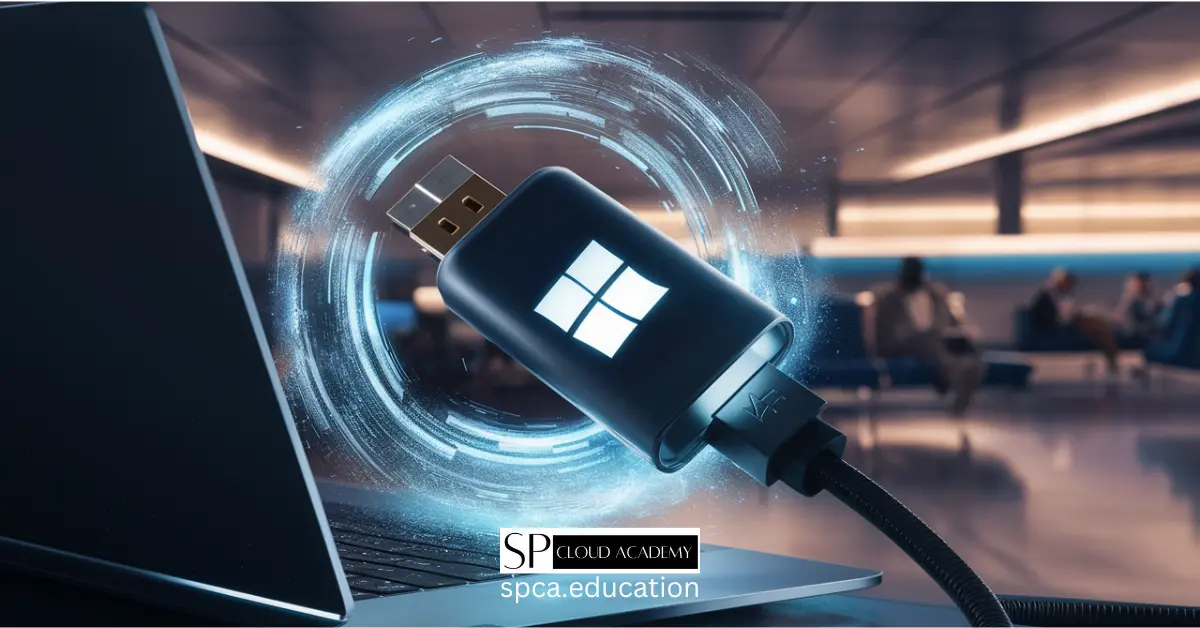
Windows To Go in Windows 11: The Portable OS Revolution You Didn’t Know You Needed!
-
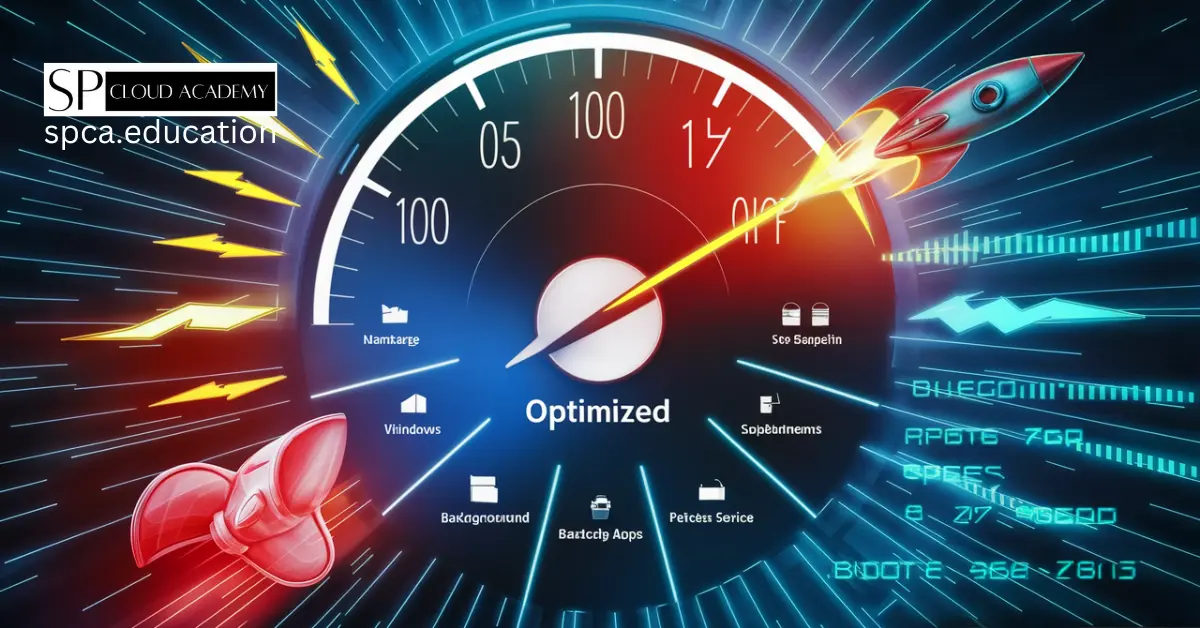
Windows 11 Performance Hacks: Stop Background Apps from Wasting Your Power!
-
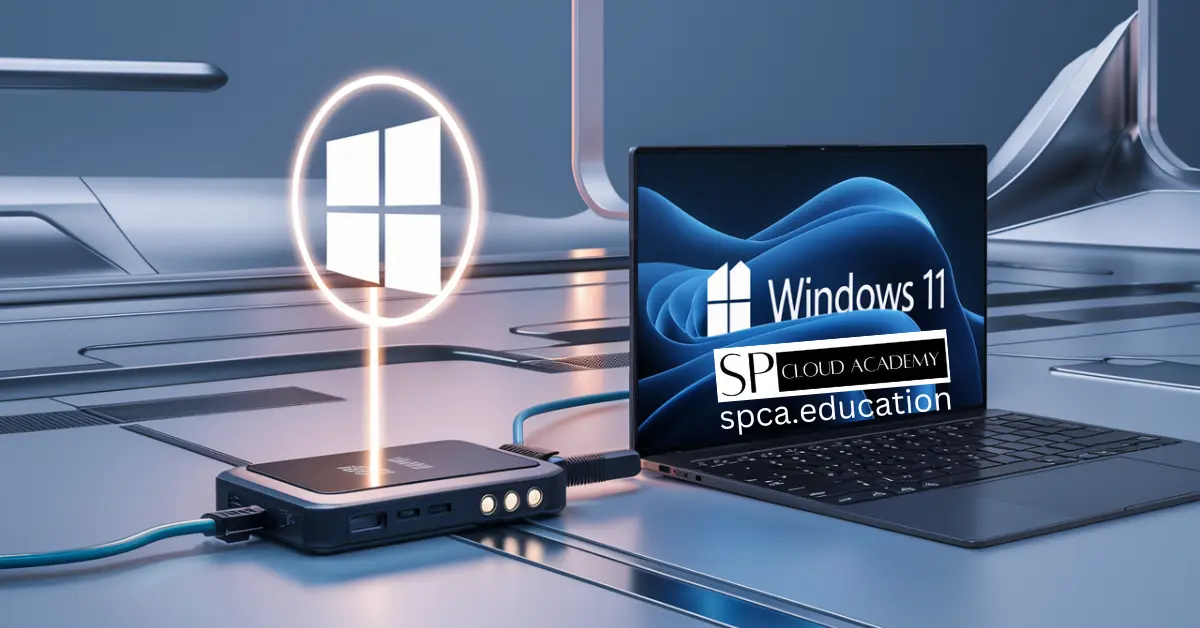
No Internal Storage? No Problem! Install Windows 11 on an External SSD Today
-
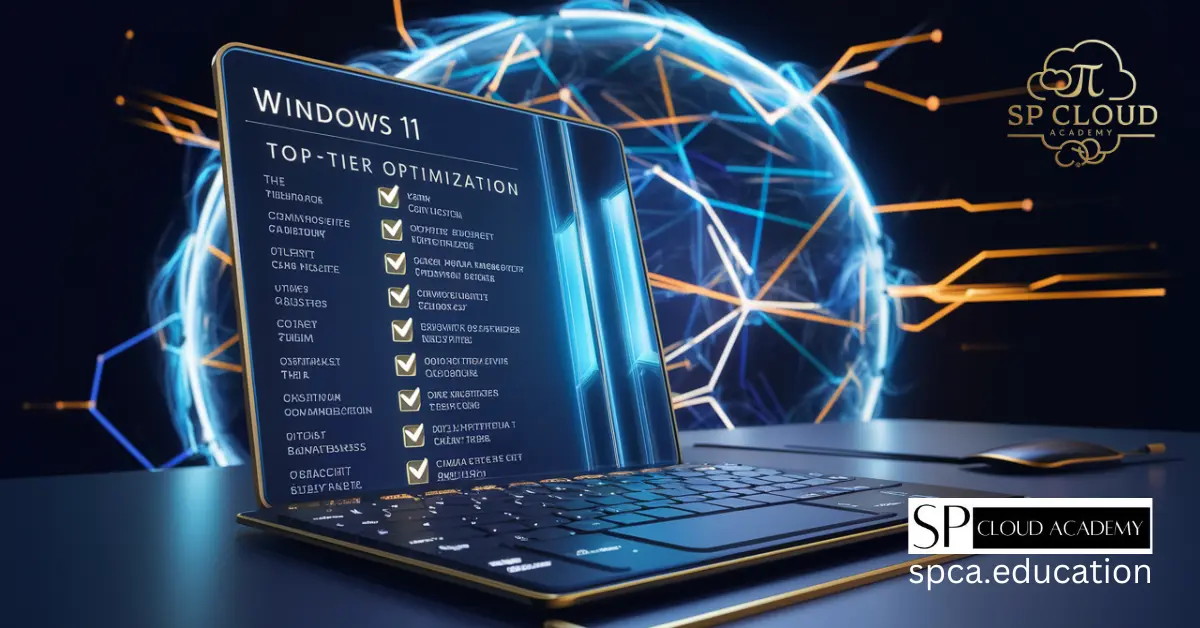
Unlock Hidden Performance: The Best Windows 11 Commands for Optimization
-

The Ultimate Guide to Troubleshooting Advanced System Issues in Windows 11
-

Revolutionize Your Digital Life: The Ultimate Guide to Cloud Integration in Windows 11
